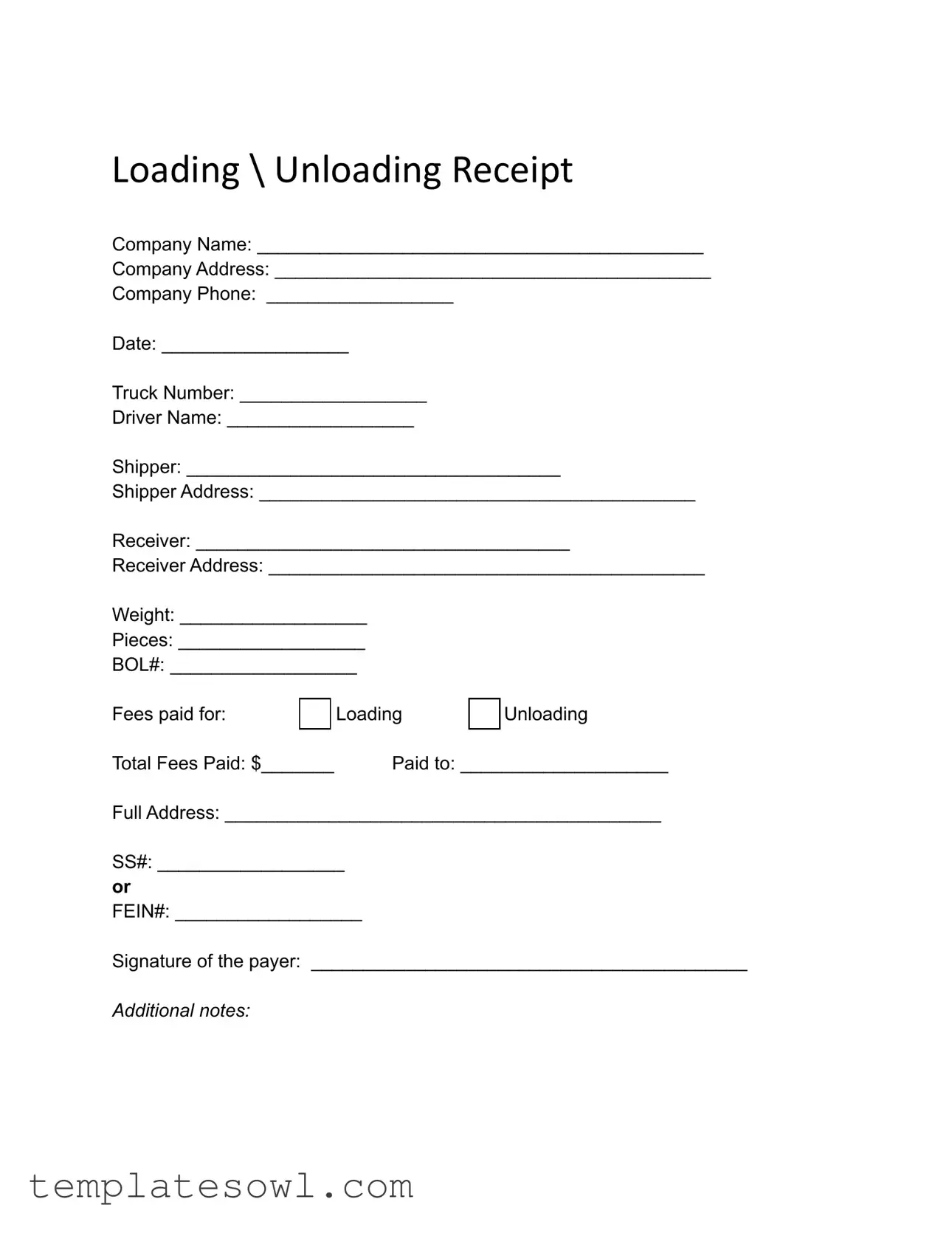What is a Lumper Receipt form?
A Lumper Receipt form is a document used in the trucking and transportation industry. It serves to acknowledge payment for loading or unloading services performed by lumpers, who are individuals or companies hired to help handle freight at shipping locations. This form captures essential details such as the company's name, truck number, and payment information. It acts as proof of service and payment, making it a crucial part of freight transactions.
What information do I need to fill out on the Lumper Receipt form?
When completing the Lumper Receipt form, several key pieces of information are required. You must include the company name, address, and phone number, as well as the date and truck number. Information about the driver and the shipment, such as the shipper and receiver addresses, weight, pieces, and Bill of Lading (BOL) number, should also be recorded. You will also need to specify the fees paid, whether they were for loading or unloading services, total fees, and the signature of the payer.
Why is it important to keep a copy of the Lumper Receipt?
Keeping a copy of the Lumper Receipt is important for several reasons. It provides evidence that payment for loading or unloading services was made, which can be necessary for accounting and auditing purposes. Additionally, in case of disputes or questions regarding services rendered, the receipt serves as a tangible record that can help resolve issues. Having this documentation available can simplify communication with shipping companies, drivers, and other parties involved in the shipping process.
What should I do if I lose my Lumper Receipt?
If you lose your Lumper Receipt, it is advisable to take immediate action. Start by contacting the lumper service provider to see if they can issue a duplicate receipt. Collect as much information as possible, such as the date of service, truck number, and payment details, to aid the provider in locating the original record. If a replacement cannot be obtained for any reason, documenting your payment and services in another format may be necessary to maintain your records.
Can I use the Lumper Receipt form for both loading and unloading fees?
Yes, the Lumper Receipt form can be used to document fees for both loading and unloading services. It has sections specifically designated for indicating which service was performed. When filling out the form, be sure to mark your payment details accurately to reflect whether you were charged for loading, unloading, or both services. This clarity will help avoid any misunderstandings regarding the nature of the transaction.
